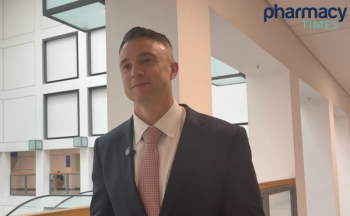The Opioid Crisis
The drug overdose epidemic has become increasingly concerning over the past 5 to 10 years. With recent data showing the US losing nearly 100,000 individuals per year from overdoses, it is important to reflect on the past crises, present dangers, and future impacts of the opioid crisis.1
The opioid crisis started about 40 years ago, initially powered by illicit substances such as heroin and cocaine or crack. In the 1990s, prescription opioid misuse increased due to pharmaceutical companies’ marketing strategies, resulting in an influx of opioid prescriptions for pain management. Restrictive prescribing laws for opioids shifted the pendulum back to heroin as a primary driver of overdose-related mortality. Today, synthetic opioids (eg, fentanyl) have saturated the illicit drug market, causing staggering increases in opioid-related deaths.2,3
In 2022, approximately 76% of fatal drug overdoses in the United States involved opioids, surpassing previous years with a total of 82,000 deaths.4 In 2024, the Centers for Disease Control and Prevention reported and predicted provisional counts of fatal drug overdoses. Each plotted point in Figure 1a represents the number of drug-related overdose deaths occurring in 12 months (eg, January 2024 reports the number of deaths between January 2023 and January 2024). Opioids were responsible for most drug overdose deaths compared with other substances (Figure 1b).5
While the downward trend is promising, the opioid crisis continues to have its negative impacts. Significant efforts have been made to improve access to essential care and treatment for individuals with opioid use disorder (OUD). These include medication-assisted treatments, telehealth initiatives, and harm reduction strategies, including naloxone distribution.6-8 Additionally, organizations such as the Substance Abuse and Mental Health Services Administration play a crucial role by providing funding and resources to combat the opioid crisis.8 Efforts also focus on improving access to evidence-based medicine by addressing systemic barriers to treatment for patients with OUD.6 Even with these initiatives at large, there are still more obstacles to overcome to provide the highest quality of care to this vulnerable patient population. The risks associated with illicit drug use are now more severe than ever, primarily due to unknown contaminants, along with impurities and nonsterile administration.
The Evolution of Veterinary Tranquilizers in Illicit Fentanyl
Veterinary tranquilizers have been detected in the fentanyl supply since the late 2010s. Xylazine, also known as “tranq,” was introduced and was present for over a decade.9,10 A unique risk associated with injecting xylazine-laced fentanyl is the development of painful skin lesions, which can lead to necrosis and severe soft tissue infections.11-13 These additional sedating effects have led to people referring to xylazine as “the zombie drug”;14 however, once xylazine became more regulated, medetomidine quickly took over as the primary contaminant.9
According to the November 2024 Drug Enforcement Administration (DEA) STREET Report, medetomidine is becoming a growing threat to the street drug supply.15 In 1996, medetomidine received its first FDA approval for use as a sedative for animals undergoing procedures or examinations, providing analgesic effects both during procedures and postoperatively. Although approved only in animals, minimal human testing has been done.16,17 Recent reports suggest an increase in human misuse in the Northeastern United States since 2022.18,19
Illicit fentanyl is typically manufactured in foreign labs without oversight or quality control and smuggled into the US. This fentanyl is often mixed with other illicit substances, such as medetomidine.20 In 2024, the US was the largest importer of medetomidine with 813 shipments, followed by India and Chile. States including Florida, Pennsylvania, Indiana, Maryland, New Jersey, Ohio, Virginia, and Washington, DC, have identified medetomidine in their street drug supplies.15 There is limited information on its growing presence; however, the most recent alert from the Philadelphia Department of Public Health confirmed the rising presence of medetomidine and decline in xylazine in the fentanyl supply (Figure 2) along with emerging treatment strategies.18
Although medetomidine belongs to the same class as xylazine, there is a disturbing difference in potency. Medetomidine is 200 times more potent than xylazine and is 10 times more selective to the α-2 adrenergic (α2-A) receptor.16,17,21 With this increased potency comes much greater dangers with misuse. All health care professionals should be aware of the growing and dangerous contaminants, recognize their effects, and understand best practices for managing patients who present with unique withdrawal symptoms.
Medetomidine’s Pharmacologic Profile
Medetomidine is classified as a sedative with α2-A receptor agonist activity. The drug effects are produced by stimulating the α2-A receptors in the central nervous system, inhibiting norepinephrine release, and decreasing sympathetic activity, leading to sedation, analgesia, and muscle relaxation. Medetomidine is also a racemic mixture of the dexmedetomidine and levomedetomidine stereoisomers, with the dextro-isomer being the active component. Dexmedetomidine (Precedex; Pfizer) is FDA approved for sedation in the intensive care unit (ICU) for mechanically ventilated and intubated patients and provides analgesia in nonintubated patients.16,17,22 In animal studies, medetomidine has been associated with adverse cardiovascular effects, including bradycardia and fluctuations in blood pressure shortly after administration. Respiratory depression may also occur, potentially leading to hypoxemia and prolonged sedation.16,17
Clinical Presentation
With the rapid increase in medetomidine in illicit drug supplies, emergency departments (EDs) have reported an influx of patients with OUD presenting with severe and atypical withdrawal symptoms. Because medetomidine is relatively new and unfamiliar primarily to health care providers, its withdrawal symptoms may go undetected or misdiagnosed, resulting in delays in appropriate and necessary treatment. In severe cases, patients can experience a rapid transition from intoxication to severe withdrawal, increasing the likelihood of ICU admission.18 The Table compares a typical opioid withdrawal presentation with symptoms associated with medetomidine withdrawal.18,23
Maria Foy, PharmD, advanced clinical pharmacy specialist in pain management and OUD at Jefferson Abington Hospital, shared her expertise in managing these cases. She explained: “Patients are presenting to the [ED] with symptoms of withdrawal different from the common opioid withdrawal symptoms. The ‘shaking’ people are experiencing is being misinterpreted as seizures. Delirium is usually not seen with opioid withdrawal and may be misdiagnosed as alcohol or benzodiazepine withdrawal. If the withdrawal progresses to the point where the patient has intractable nausea and vomiting, the oral α agonists needed to treat withdrawal will not be tolerated. Once a patient cannot take oral [medications], patients may need dexmedetomidine for treatment, which can only be given in an ICU setting.”23
Associated Risks
There are now more critical risks to be aware of when using illicit substances due to new contaminants present. Many individuals using nonmedical opioids are unaware that medetomidine is present in the heroin and fentanyl supplies. Given the increased potency of medetomidine, the likelihood of unintentional overdose or severe withdrawal is high. Currently, there is no FDA-approved reversal agent for medetomidine in humans. Veterinarians use atipamezole or yohimbine to counteract its effects in animals, but neither is approved for human use. Since medetomidine does not act on opioid receptors, naloxone is ineffective; however, health responders should still administer naloxone upon presentation, given the possibility that medetomidine is mixed with opioids.24
Given that medetomidine is in the same drug class as xylazine, there may be shared similarities, especially regarding adverse effects (AEs). A common risk associated with xylazine is the development of necrotic wounds; however, this AE does not seem to correlate with medetomidine use. With any injectable, there is a risk of infection, but this risk is often increased if needles are shared/reused or if substances contain impurities.
The Role of the Pharmacist
Pharmacists can play a crucial role in early detection and management of medetomidine withdrawal in the ED. Increased infections from xylazine-related wounds have also contributed to rising inpatient admissions. Withdrawal needs to be prevented in order for patients to stay for medical treatment. Pharmacists can assist in implementing the Clinical Opiate Withdrawal Scale for symptom assessment and recommend early treatments to control the patient’s symptoms and prevent ICU level of care. Controlling high blood pressure and heart rate quickly is imperative; these patients may require high-dose clonidine with a transdermal patch as well as oral administration if possible. Nausea control is also important to increase the tolerability of oral administration.18
In addition to early management, the pharmacist can provide education to ED staff and the rest of the clinical team. Tailoring opioid therapy based on the patient’s reported street opioid use is important to provide pain relief and minimize withdrawal complications. These patients usually require much higher doses of opioids for withdrawal prevention than health care professionals might be comfortable giving. The pharmacist can provide education on an opioid conversions to reassure the rest of the clinical team that the high-dose treatment is appropriate and safe for symptom relief. If the patient progressively deteriorates, symptoms will progress to the point where ICU admission will be needed for treatment with a dexmedetomidine drip and additional supportive management.18
Outside the ED, pharmacists in community, ambulatory care, and harm reduction settings will play a crucial role in addressing the serious risks associated with medetomidine. Since medetomidine is not widespread across the US, many outpatient pharmacists may be unaware of its presence as a contaminant in fentanyl. It is critical for pharmacists to stay up to date with local and state health alerts as well as DEA reports to be equipped with the necessary knowledge for helping these patients.
Many people who use illicit drugs might not know what medetomidine is. When interacting with patients at risk, pharmacists can provide education on what medetomidine is and the dangers associated with its presence in the illicit fentanyl supply. Individuals at risk should be made aware that there are no commercially available test strips to detect medetomidine, but if the substance tests positive for fentanyl, there is a strong likelihood that medetomidine is also present.18 In addition, naloxone does not reverse medetomidine’s effects, so patients should be educated on the importance of seeking medical attention if they suspect medetomidine exposure or experience withdrawal symptoms that seem different or more severe.
There is a significant amount of unaddressed stigma in the realm of OUD. Patients with a history of OUD may experience stigma when presenting to a health care setting, which can lead to a delay in care and complications. There is also stigma associated with medications for OUD (MOUD), resulting in patients with OUD not wanting to try treatments like methadone or buprenorphine/naloxone.25,26
Pharmacists can advocate for this patient population by encouraging all health care professionals not to define individuals by their disease. Development of a treatment algorithm, an opioid conversion table with respect to potential street use, and a corresponding order set within a hospital’s electronic patient record system can help facilitate early action and fast treatment for patients presenting with suspected medetomidine withdrawal. Pharmacists in all clinical settings can utilize motivational interviewing techniques with individuals willing to have a conversation about their drug use. Through this communication, pharmacists can encourage recovery and provide resources for treatment, including rehabilitation programs, harm reduction services, and organizations such as Ophelia that offer support and MOUD-assisted treatments.27 Having an open and productive conversation with a patient at risk may encourage safer drug use practices or lead to the start of a successful recovery.
About the Authors
Colleen Huzinec, PharmD, is a pharmacist at The Art of Medicine Compounding Pharmacy in Philadelphia, Pennsylvania. She graduated from the Philadelphia College of Pharmacy at St Joseph’s University in May 2025.
Miranda Barker, PharmD, is the global risk management and safety surveillance fellow at Incyte in partnership with St Joseph’s University. She graduated from the Philadelphia College of Pharmacy at St Joseph’s University in May 2025.
Conclusion
Medetomidine’s emergence in the illicit fentanyl supply marks a significant and alarming shift in the opioid crisis. With its high potency, lack of an FDA-approved reversal agent, and unique profile, medetomidine has posed and will continue to pose new challenges for health care professionals and individuals with substance use disorders. Awareness, early identification, and proper management are critical to mitigate the risks associated with this growing contaminant. Pharmacists must stay informed, advocate for harm reduction strategies, and provide patient-centered care to address this evolving threat. Continued research, education, and policy efforts will be essential in combating the dangers of medetomidine and protecting those at risk.
REFERENCES
National Institutes of Health. The opioid crisis. Updated July 23, 2024. Accessed September 1, 2025. https://heal.nih.gov/about/opioid-crisis
The Lancet Regional Health–Americas. Opioid crisis: addiction, overprescription, and insufficient primary prevention. Lancet Reg Health Am. 2023;23:100557. doi:10.1016/j.lana.2023.100557
Dowell D, Brown S, Gyawali S, et al. Treatment for opioid use disorder: population estimates—United States, 2022. MMWR Morb Mortal Wkly Rep. 2024;73(25):567-574. doi:10.15585/mmwr.mm7325a1
Centers for Disease Control and Prevention. Provisional drug overdose death counts. Updated September 17, 2025. Accessed September 1, 2025. https://www.cdc.gov/nchs/nvss/vsrr/drug-overdose-data.htm
Madras BK, Ahmad NJ, Wen J, Sharfstein JS. Improving access to evidence-based medical treatment for opioid use disorder: strategies to address key barriers within the treatment system. NAM Perspect. 2020;2020:10.31478/202004b. doi:10.31478/202004b
Uscher-Pines L, Huskamp HA, Mehrotra A. Treating patients with opioid use disorder in their homes: an emerging treatment model. JAMA. 2020;324(1):39-40. doi:10.1001/jama.2020.3940
Kariisa M, Patel P, Smith H, Bitting J. Notes from the field: xylazine detection and involvement in drug overdose deaths—United States, 2019. MMWR Morb Mortal Wkly Rep. 2021;70(37):1300-1302. doi:10.15585/mmwr.mm7037a4
Malayala SV, Papudesi BN, Bobb R, Wimbush A. Xylazine-induced skin ulcers in a person who injects drugs in Philadelphia, Pennsylvania, USA. Cureus. 2022;14(8):e28160. doi:10.7759/cureus.28160
Friedman J, Montero F, Bourgois P, et al. Xylazine spreads across the US: a growing component of the increasingly synthetic and polysubstance overdose crisis. Drug Alcohol Depend. 2022;233:109380. doi:10.1016/j.drugalcdep.2022.109380
Debnath R, Chawla PA. Xylazine addiction turning humans to zombies: fact or myth? Health Sci Rev. 2023;9:100132. doi:10.1016/j.hsr.2023.100132
de Andrade Horn P, Berida TI, Parr LC, et al. Classics in chemical neuroscience: medetomidine. ACS Chem Neurosci. 2024;15(21):3874-3883. doi:10.1021/acschemneuro.4c00583
Department of Public Health, City of Philadelphia. Hospitals and behavioral health providers are reporting severe and worsening presentations of withdrawal among people who use drugs (PWUD) in Philadelphia. Updated December 10, 2024. Accessed September 1, 2025. https://hip.phila.gov/document/4874/PDPH-HAN-00444A-12-10-2024.pdf
Connell AR, Hookham MB, Fu D, Brazil DP, Lyons TJ, Yu JY. Comparisons of α2-adrenergic agents, medetomidine and xylazine, with pentobarbital for anesthesia: important pitfalls in diabetic and nondiabetic rats. J Ocul Pharmacol Ther. 2022;38(2):156-166. doi:10.1089/jop.2021.0084
American Psychiatric Association. Substance-related and addictive disorders. In: Diagnostic and Statistical Manual of Mental Disorders. March 2025. doi:10.1176/appi.books.9780890425787.x16_Substance_Related_Disorders
Department of Public Health, City of Philadelphia. In Philadelphia, medetomidine, a potent non-opioid veterinary sedative, has been detected in the illicit drug supply. Updated May 13, 2024. Accessed September 1, 2025. https://hip.phila.gov/document/4421/PDPH-HAN-0441A-05-13-24.pdf
McCurry MK, Avery-Desmarais S, Schuler M, Tyo M, Viveiros J, Kauranen B. Perceived stigma, barriers, and facilitators experienced by members of the opioid use disorder community when seeking healthcare. J Nurs Scholarsh. 2023;55(3):701-710. doi:10.1111/jnu.12837
Judd H, Yaugher AC, O'Shay S, Meier CL. Understanding stigma through the lived experiences of people with opioid use disorder. Drug Alcohol Depend. 2023;249:110873. doi:10.1016/j.drugalcdep.2023.110873
Ophelia. How it works. Accessed September 1, 2025. https://ophelia.com





















































































































































































































